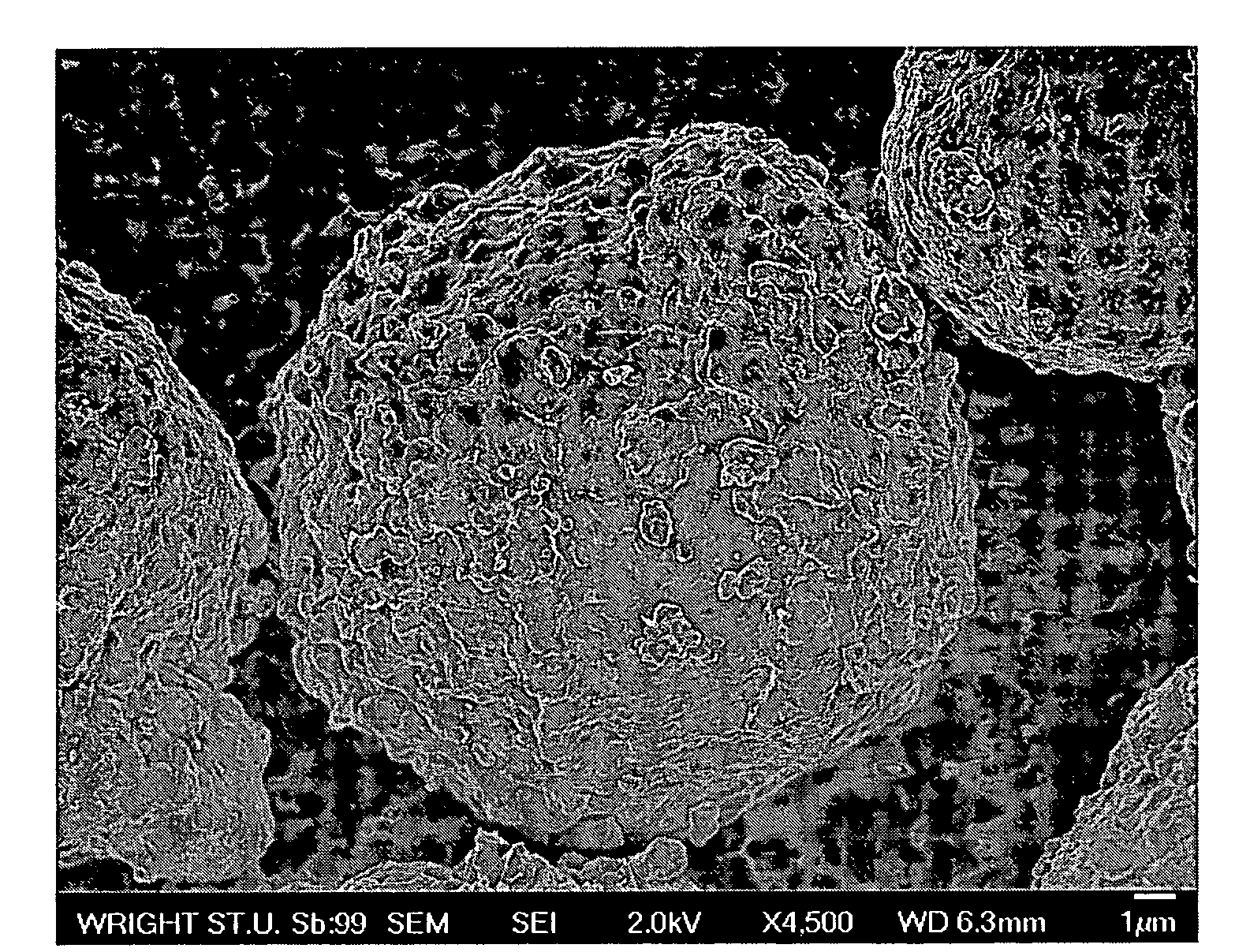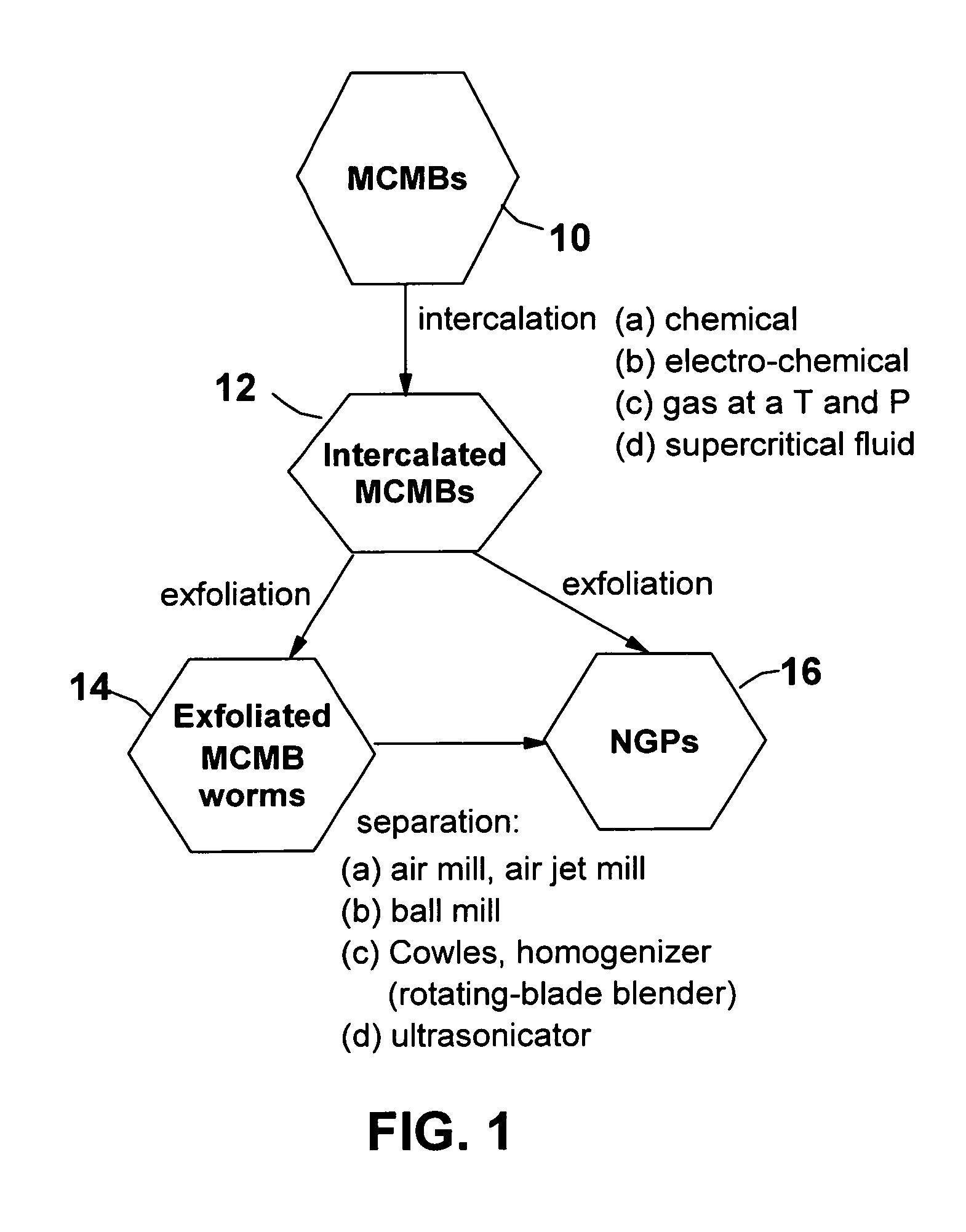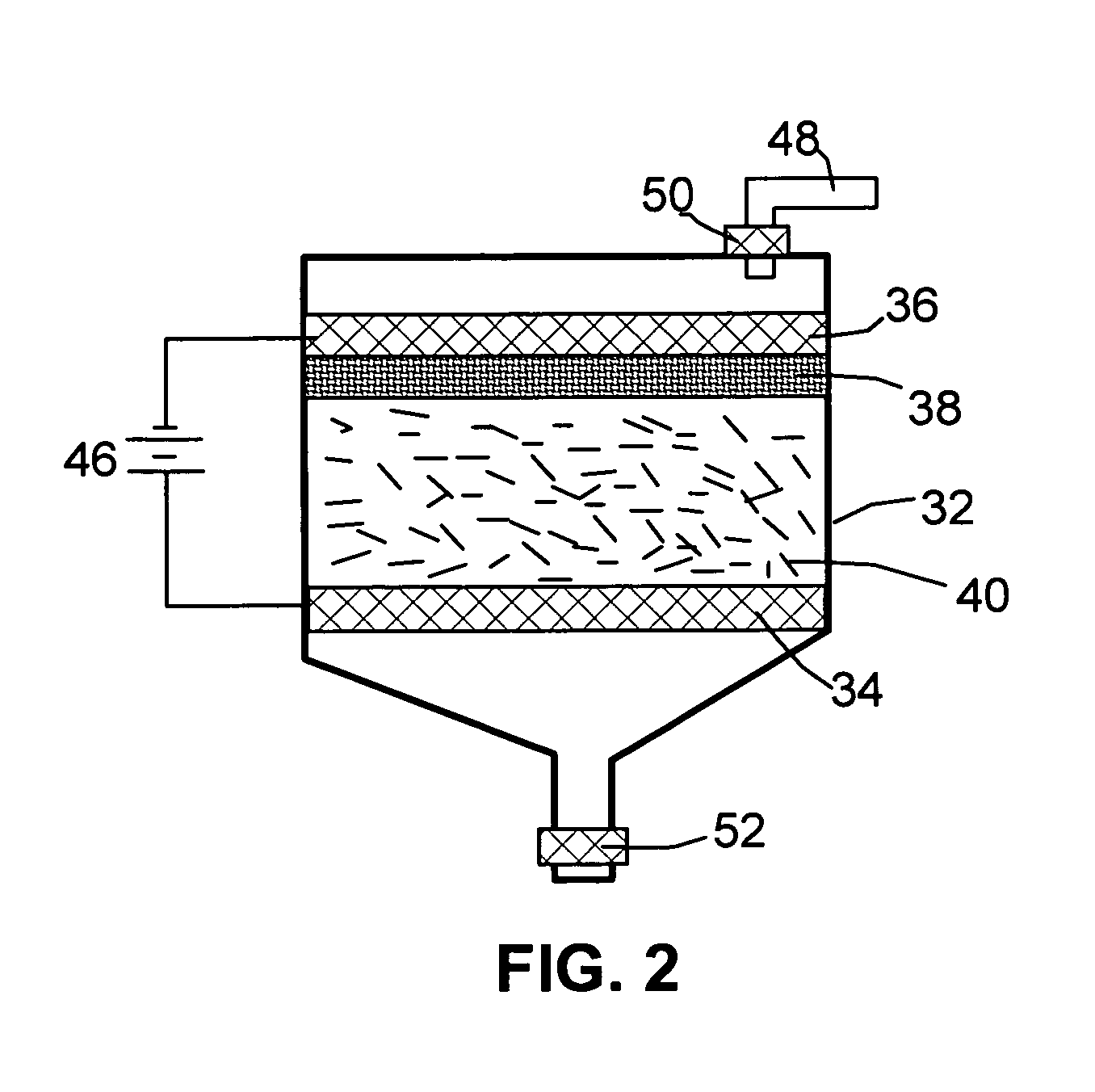Production of ultra-thin nano-scaled graphene platelets from meso-carbon micro-beads
a technology of graphene and micro-beads, which is applied in the direction of graphene, material nanotechnology, chemistry apparatus and processes, etc., can solve the problems of high material cost, affecting the widespread application of cnts, and previously invented methods with several serious drawbacks, etc., to achieve relatively easy and relatively uniform penetration into the bead, reduce the dimension of ngps, and complete very quickly
- Summary
- Abstract
- Description
- Claims
- Application Information
AI Technical Summary
Benefits of technology
Problems solved by technology
Method used
Image
Examples
example 1
Nano-Scaled Graphene Platelets (NGPs) from MCMBs via Halogen Intercalation and Exfoliation Steps
[0083]MCMB 2528 microbeads were supplied by Alumina Trading, which is the U.S. distributor for the supplier, Osaka Gas Company of Japan. This material has a density of about 2.24 g / cm3; a particle size maximum for at least 95% by weight of the particles of 37 microns; median size of about 22.5 microns and an inter-planar distance of about 0.336 nm. One hundred grams of MCMBs and a proper amount of bromine liquid were sealed in a two-chamber quartz tube with the chamber controlled at 25° C. and bromine at 20° C. for 36 hours to obtain a halogen-intercalated MCMB compound.
[0084]Subsequently, approximately ⅔ of the intercalated compound was transferred to a furnace pre-set at a temperature of 200° C. for 30 seconds. The compound was found to induce extremely rapid and high expansions of graphite crystallites. The thickness of individual platelets ranged from one graphene sheets to approximat...
example 2
NGPs from Sulfuric Acid Intercalation and Exfoliation of MCMBs
[0085]MCMB 2528 (10 grams) were intercalated with an acid solution (sulfuric acid, nitric acid, and potassium permanganate at a ratio of 4:1:0.05) for several lengths of time (10 minutes, 20 minutes, 30 minutes, 2 hours, and 24 hours). Upon completion of the reaction, in each case, the mixture was poured into deionized water and filtered. The intercalated MCMBs were repeatedly washed in a 5% solution of HCl to remove most of the sulphate ions. The sample was then washed repeatedly with deionized water until the pH of the filtrate was neutral. The slurry was spray-dried and stored in a vacuum oven at 60° C. for 24 hours. The dried powder sample was placed in a quartz tube and inserted into a horizontal tube furnace pre-set at a desired temperature. For each group of samples, four exfoliation temperatures were used: 150° C., 300° C., 600° C., and 1,050° C., each for 30 seconds. Each sample was mixed with water and ultrasoni...
example 3
Hydrogen Peroxide-Assisted, Formic Acid-Intercalated MCMBs
[0087]One hundred grams of MCMB-2528 were immersed in a mixture of 50 L of formic acid and 2.5 L of hydrogen peroxide at 45° C. for 24 hours. Following the chemical oxidation intercalation treatment, the resulting intercalated MCMBs were washed with water and dried. The resulting product is a formic acid-intercalated MCMB compound.
[0088]Subsequently, the intercalated compound was transferred to a furnace pre-set at a temperature of 800° C. for 30 seconds. The compound was found to induce extremely rapid and high expansions of graphite crystallites. The exfoliated MCMBs were then submitted to a mechanical shearing treatment using a Cowles (rotating blade disperser) for 20 minutes. The thickness of the resulting NGPs was found to range from one graphene sheets to approximately 10 graphene sheets (average of approximately 1.9 nm) based on TEM observations. The NGP sample exhibits a specific surface area of 510 m2 / g as measured b...
PUM
| Property | Measurement | Unit |
|---|---|---|
| thickness | aaaaa | aaaaa |
| thickness | aaaaa | aaaaa |
| length | aaaaa | aaaaa |
Abstract
Description
Claims
Application Information
 Login to View More
Login to View More - R&D
- Intellectual Property
- Life Sciences
- Materials
- Tech Scout
- Unparalleled Data Quality
- Higher Quality Content
- 60% Fewer Hallucinations
Browse by: Latest US Patents, China's latest patents, Technical Efficacy Thesaurus, Application Domain, Technology Topic, Popular Technical Reports.
© 2025 PatSnap. All rights reserved.Legal|Privacy policy|Modern Slavery Act Transparency Statement|Sitemap|About US| Contact US: help@patsnap.com



